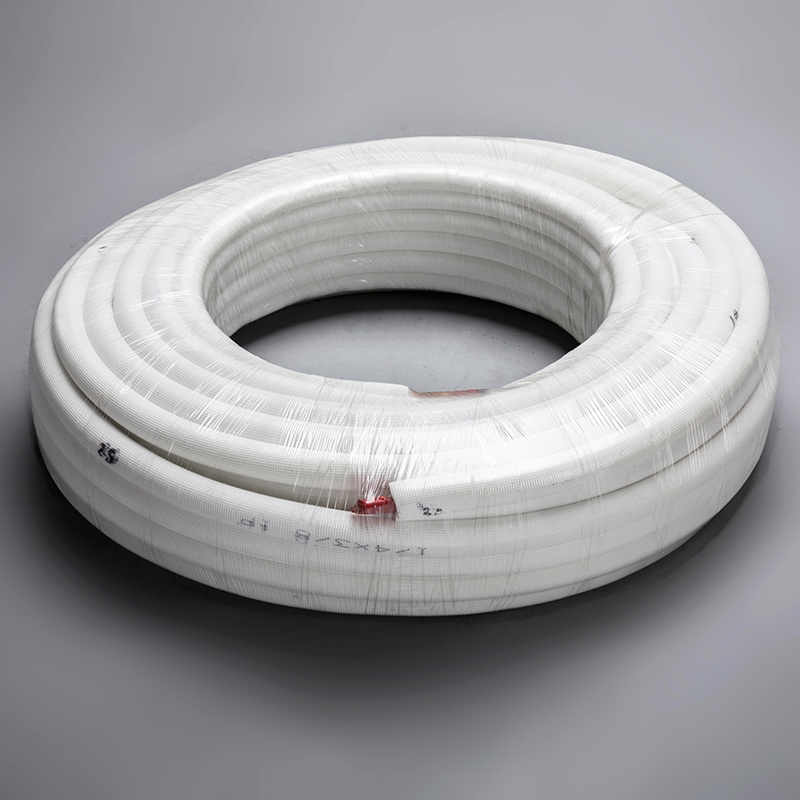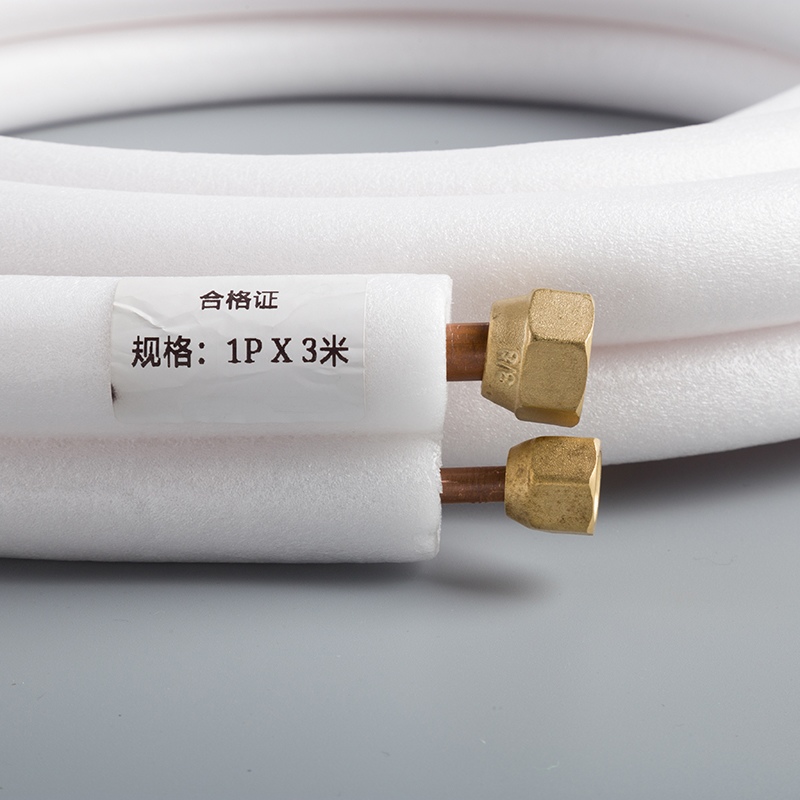Copper vs Aluminum Pipes in AC Systems: A Comprehensive Comparison

When deciding between copper and aluminum pipes for your AC system, you might question why copper pipe is used in ac systems more frequently. Copper pipes excel in heat transfer, making them a popular choice due to their superior thermal conductivity, which is nearly double that of aluminum, thus enhancing efficiency. Copper's durability and ease of maintenance further highlight its advantages. While aluminum is more cost-effective, it doesn't match copper's performance. Understanding these differences helps you make informed decisions, ensuring your air conditioner operates efficiently and lasts longer. Consider factors like heat transfer and air conditioner copper pipe corrosion when selecting the right material for your needs.
Material Properties
Composition and Structure
When you examine the composition of copper and aluminum, you'll notice distinct differences. Copper, a pure metal, boasts a dense atomic structure. This structure contributes to its high strength and durability. In contrast, aluminum often appears in alloy form. Manufacturers mix it with other elements to enhance its properties. For example, adding copper to aluminum alloys can increase their tensile strength, reaching above 400 MPa. This modification makes aluminum alloys more suitable for specific applications.
Weight and Flexibility
Weight plays a crucial role in material selection. Aluminum stands out as a lightweight option. Its low density makes it easier to handle and transport. This characteristic proves beneficial in applications where weight reduction is essential. On the other hand, copper is heavier. Its density adds to its robustness, making it ideal for situations requiring strength and resilience.
Flexibility also matters when choosing materials for AC systems. Copper's malleability allows you to bend and shape it easily. This flexibility simplifies installation, especially in tight spaces. Aluminum, while less flexible, still offers some degree of pliability. However, it may require more effort to manipulate compared to copper.
Thermal Conductivity
Heat Transfer Efficiency
When it comes to heat transfer efficiency, copper stands out as a superior choice. You benefit from copper's high thermal conductivity, which measures around 385 W/m·K. This means copper pipes transfer heat more effectively than aluminum pipes, which have a thermal conductivity of about 205 W/m·K. The nearly double efficiency of copper ensures that your AC system operates at optimal levels, providing better cooling performance. This efficiency translates into quicker temperature adjustments and a more comfortable indoor environment.
Impact on Energy Consumption
The choice between copper and aluminum pipes also affects energy consumption. With copper's superior heat transfer capabilities, your AC system requires less energy to achieve the desired cooling effect. This efficiency can lead to significant energy savings over time. You might notice a reduction in your electricity bills, as the system doesn't have to work as hard to maintain the set temperature. On the other hand, aluminum, while cost-effective initially, may lead to higher energy costs due to its lower thermal conductivity. By choosing copper, you invest in a more energy-efficient solution that benefits both your wallet and the environment.
Corrosion Resistance

Susceptibility to Corrosion
When considering materials for AC systems, understanding why copper pipe is used in ac systems more frequently involves examining corrosion resistance. Copper exhibits remarkable resistance to corrosion, which makes it a preferred choice for air conditioning applications. This resistance stems from copper's ability to form a protective oxide layer on its surface. This layer acts as a barrier, preventing further oxidation and degradation. In contrast, aluminum is more prone to corrosion, especially when exposed to moisture and other environmental factors.
Scientific Research Findings:
Studies have shown that increasing copper content in aluminum decreases its corrosion resistance. This is because copper in solid solution has less effect on corrosion resistance than copper as intermetallic phases of CuAl2.
You might wonder how this affects your AC system. Corrosion can lead to leaks and reduced efficiency, impacting the overall performance of your air conditioner. By choosing copper pipes, you minimize the risk of air conditioner copper pipe corrosion, ensuring a longer-lasting and more reliable system.
Longevity in Different Environments
The longevity of materials in various environments plays a crucial role in their selection for AC systems. Copper's superior corrosion resistance contributes to its durability, making it suitable for diverse climates and conditions. Whether you live in a humid coastal area or a dry desert region, copper pipes maintain their integrity over time. This resilience ensures that your AC system continues to function efficiently without frequent repairs or replacements.
Aluminum, while lightweight and cost-effective, may not offer the same longevity in harsh environments. Its susceptibility to corrosion can lead to premature failure, especially in areas with high humidity or salt exposure. This is why copper pipe is used in ac systems more often, as it provides a reliable and long-lasting solution.
Durability
Strength and Resilience
When you consider the strength and resilience of materials for AC systems, copper vs aluminum pipes emerges as a robust choice. Copper's dense atomic structure contributes to its superior strength, making it more durable than aluminum. This strength ensures that copper pipes withstand various stresses and strains without deforming or breaking. You can rely on copper to maintain its integrity over time, even in demanding conditions.
In contrast, aluminum, while lightweight and easy to handle, does not match copper's strength. Its lower tensile strength makes it more susceptible to damage under pressure or impact. Although aluminum can be reinforced with alloys, it still falls short of copper's resilience. For applications where durability is paramount, copper provides a more reliable solution.
Performance Under Pressure
Copper's performance under pressure further highlights its suitability for AC systems. You benefit from copper's ability to handle high-pressure environments without compromising its structural integrity. This characteristic is crucial for air conditioning systems, where pipes must endure fluctuating pressures during operation. Copper's resilience ensures that your system functions efficiently and reliably, reducing the risk of leaks or failures.
Aluminum, on the other hand, may struggle under similar conditions. Its lower pressure resistance can lead to deformation or rupture, especially in high-stress scenarios. While aluminum offers a cost-effective alternative, its performance under pressure may not meet the demands of all AC applications. By choosing copper, you invest in a material that delivers consistent performance and peace of mind.
Cost Considerations
Initial Purchase Price
When you evaluate the initial purchase price of pipes for your AC system, copper pipes generally come with a higher price tag compared to aluminum. This cost difference stems from copper's superior properties, such as its excellent thermal conductivity and durability. While aluminum pipes offer a more budget-friendly option, they may not provide the same level of performance and reliability as copper.
Copper's higher cost reflects its value in terms of longevity and efficiency. You might find that investing in copper pipes upfront can save you money in the long run, as they require less frequent replacement and maintenance. However, if your primary concern is minimizing initial expenses, aluminum pipes could be a viable alternative, especially for short-term applications or less demanding environments.
Long-term Cost Implications
Considering the long-term cost implications is crucial when choosing between copper and aluminum pipes. Copper pipes offer several advantages that can lead to cost savings over time. Their durability and resistance to corrosion mean fewer repairs and replacements, reducing maintenance costs. You benefit from copper's ability to withstand high pressure and harsh conditions, ensuring your AC system remains reliable and efficient.
Aluminum pipes, while initially cheaper, may incur higher costs in the long run due to their susceptibility to corrosion and lower durability. Frequent repairs or replacements can add up, potentially offsetting the initial savings. Additionally, aluminum's lower heat transfer capabilities might lead to increased energy consumption, further impacting your budget.
Installation and Maintenance
Ease of Installation
When you consider installing pipes in your AC system, copper pipes present a unique set of advantages and challenges. Copper's malleability allows you to bend and shape it easily, which simplifies installation in tight spaces. This flexibility is particularly beneficial when retrofitting existing systems or working in confined areas. However, copper pipes are heavier than aluminum, requiring more effort during installation. Installers often need to navigate this added weight, which can be a consideration in complex installations.
In contrast, aluminum pipes are lighter, making them easier to handle and transport. This lightweight nature can reduce installation time and labor costs. However, aluminum's lower flexibility compared to copper might require additional fittings and joints, potentially complicating the installation process. Understanding why copper pipe is used in ac systems more frequently involves weighing these factors. Copper's ease of bending and shaping often outweighs the challenges posed by its weight, especially in intricate installations.
Maintenance Requirements
Maintaining your AC system efficiently involves understanding the maintenance needs of copper and aluminum pipes. Copper pipes boast a higher tolerance to corrosion and wear, allowing them to withstand environmental factors for prolonged periods. This resistance to air conditioner copper pipe corrosion means fewer repairs and replacements, reducing maintenance costs over time. You benefit from copper's durability, as it maintains its integrity even in harsh conditions.
Aluminum pipes, while initially cheaper, may require more frequent maintenance due to their susceptibility to corrosion. This vulnerability can lead to leaks and reduced efficiency, impacting the overall performance of your AC system. Regular inspections and potential repairs can add to the long-term costs of using aluminum pipes. By choosing copper, you invest in a material that offers reliability and longevity, minimizing maintenance efforts and ensuring your air conditioner operates smoothly.
Environmental Impact
Sustainability and Recycling
When you consider the environmental impact of materials, both copper and aluminum offer significant benefits in terms of sustainability and recycling. Copper is highly recyclable, which means you can reuse it multiple times without losing its quality. This recyclability reduces the need for new copper mining, conserving natural resources and minimizing environmental disruption. The strength of copper pipes allows for reuse, making them a sustainable choice for long-term applications.
Aluminum also shines in the realm of recycling. The process of recycling aluminum is not only straightforward but also energy-efficient. By recycling aluminum, you save approximately 90-95% of the energy required to produce new aluminum from raw materials. This energy savings translates into reduced carbon emissions, contributing to a cleaner environment. Industries, including automakers, actively seek recycled aluminum to meet sustainability goals, further promoting its use.
Environmental Footprint
The environmental footprint of copper and aluminum extends beyond recycling. Copper's durability means fewer replacements, reducing waste and the environmental impact associated with manufacturing new pipes. Its ability to resist corrosion ensures a longer lifespan, which means less frequent disposal and replacement. This longevity contributes to a smaller environmental footprint over time.
Aluminum, while lightweight and easy to handle, may not offer the same durability as copper. Its susceptibility to deformation after one move can lead to increased waste if not recycled properly. However, the ease of recycling aluminum helps mitigate this issue. By choosing materials that prioritize sustainability and recycling, you play a crucial role in reducing the environmental footprint of your AC system.
In comparing copper and aluminum pipes for AC systems, you find distinct advantages with each material. Copper excels in thermal conductivity, durability, and corrosion resistance, making it ideal for long-term efficiency and reliability. Aluminum offers a lightweight and cost-effective alternative, suitable for projects where budget and weight are priorities.
See Also
Comparing Copper And Aluminum Tubes For Air Conditioning
Reasons To Opt For Copper Pipes In AC Systems
Explore The Five Key Advantages Of Copper Pipes


